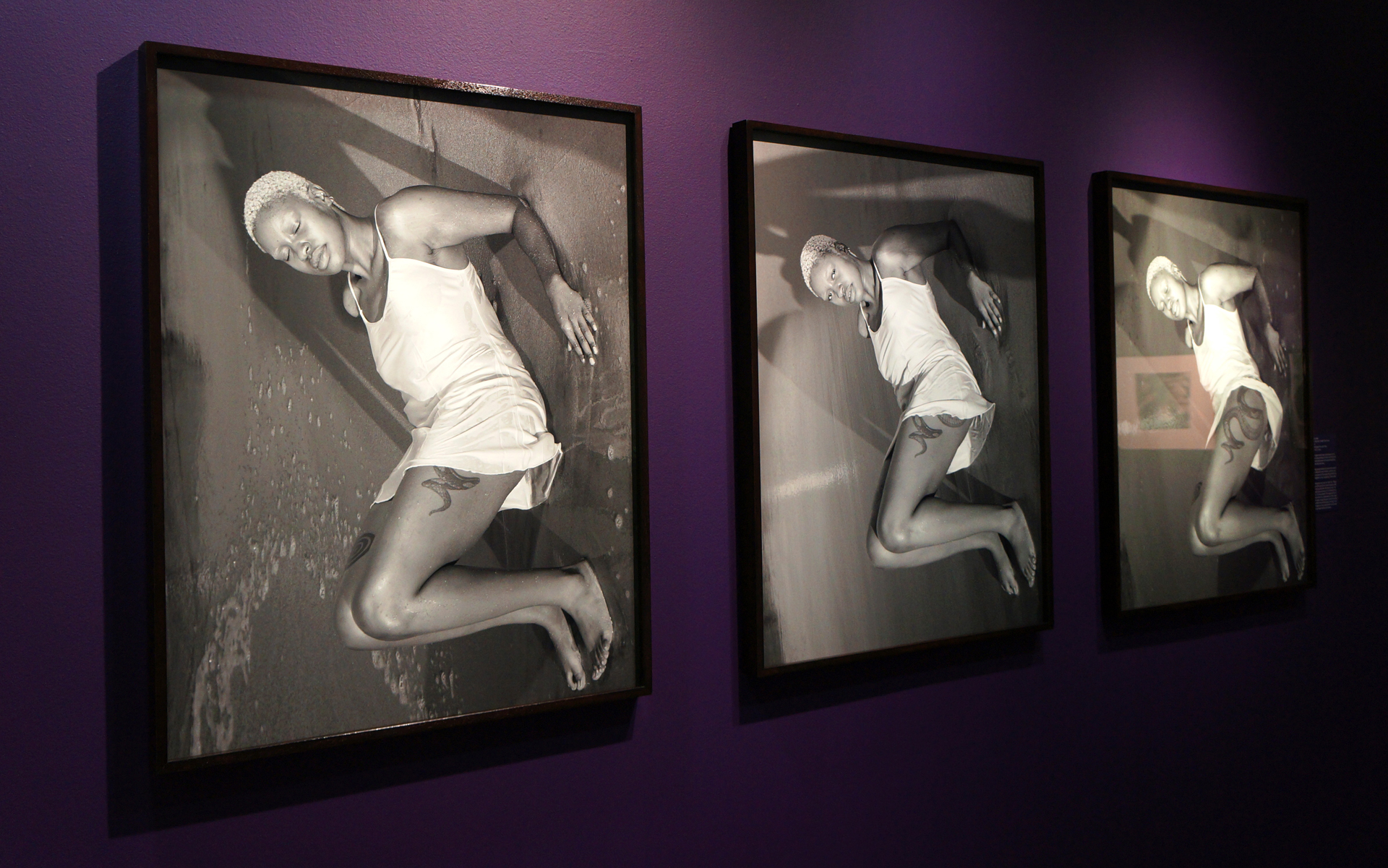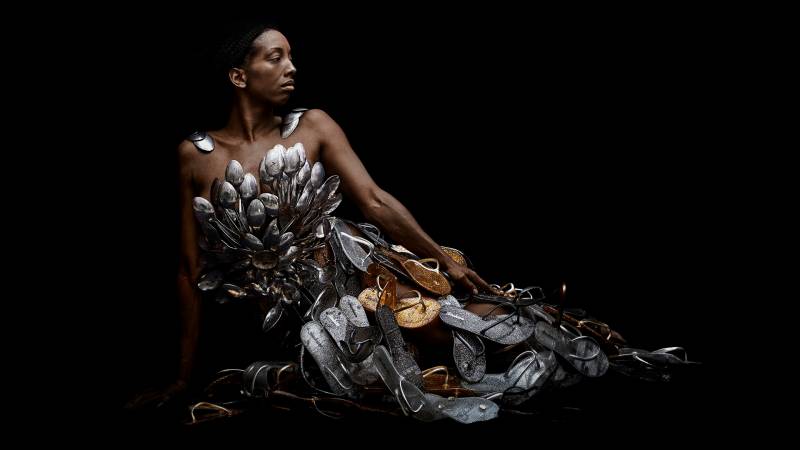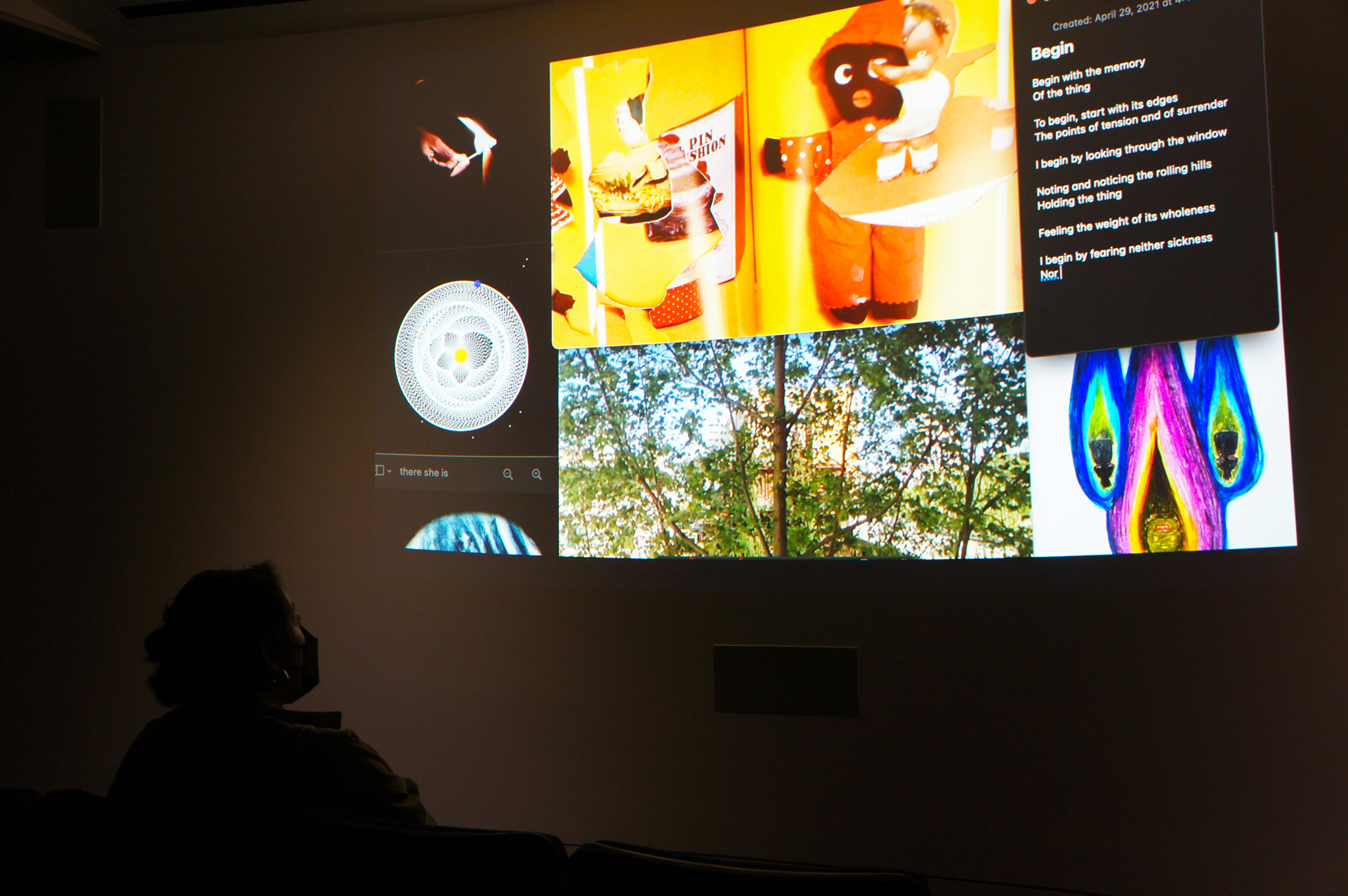When I was first introduced to the concept of Venus in high school, my understanding of the mythological goddess figure was shaped by the romantic lens of European Renaissance painting. This rendition of Venus, with her dreamy, faraway stare, porcelain skin and long, flowing tresses epitomized beauty and grace. But in the late 1700s, caricatured depictions of an enslaved woman, Saartje Baartman, were spread and popularized as “Hottentot Venus,” creating an early example of a fetishized and racist visual representation of Black women.
In Black Venus, a new exhibition on view at the Museum of the African Diaspora until Aug. 20, curator Aindrea Emelife looks towards this piece of lost history while exploring the representation of Black women through the eyes of several contemporary Black artists. With large-scale photographs, collage pieces, self-portraits and moving projections, the exhibition’s various portrayals of Black womanhood collide and coalesce. The timeline they create both preserves the past and generates space for the future.
Each artwork illustrates its own Venus: a video vixen, a queer pageant contestant, the artist themselves. Imaginative and intimate, the exhibition’s pieces are personal reflections on the body, identity and subjugation.
As I walked through MoAD’s quiet gallery space, I was first drawn towards artist Widline Cadet’s On a Clear Day, I Thought I Saw Forever. The consistency offered by the triptych structure is broken up by the subject’s direct stare in the center photo, as they boldly look back at the viewer, posture unchanged. In the piece’s description, Cadet explains that the work is a rumination on the body and desire, and that her awareness of these two issues grew alongside her interests in R&B and hip-hop music.

“Seeing how other Black women in those videos occupied their bodies with a kind of freedom, confidence, and self-assuredness of their beauty and desirability was unimaginable to a shy, immigrant kid,” Cadet writes in the wall text. The piece is meant to make you waver for a moment, to stop and look again at the eyes that regard you with calm defiance.




